You’ve never seen a bird like this one. The shoebill stork may look positively prehistoric because it very well may be — scientists believe it’s related to the dinosaur.
The bird had been relatively unknown outside its habitat until social media came along, but today, it fascinates people across the world.
A Monicker that Fits the Bill
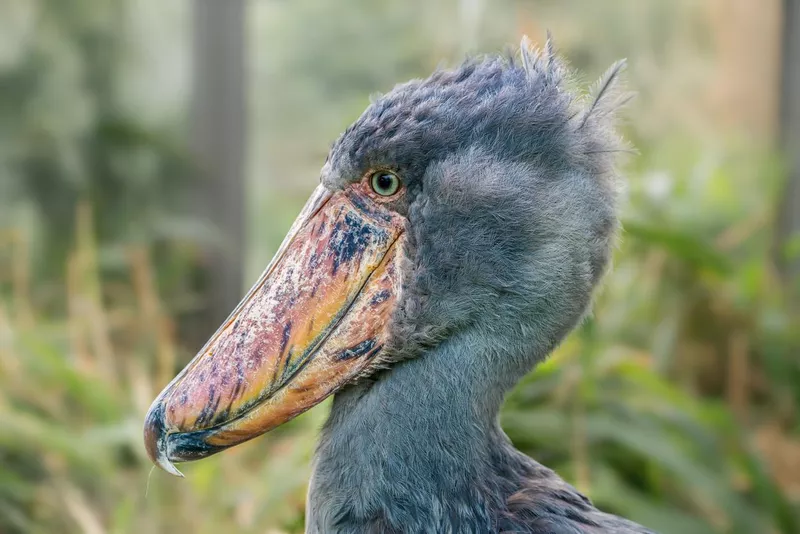
miroslav_1 / Getty Images
The shoebill is named for its large, shoe-shaped beak. These strange, prehistoric-looking birds are sometimes called whale-billed or whale-headed storks.
Shoebills were first described in ancient Egyptian writings, but they weren’t classified until the 19th century. Even so, there’s not much known about them.
But They Are Storks in Name Only

Mario Koti / Getty Images
Surprisingly, shoebills are not actually storks. Genetic testing has shown them to be members of the order Pelecaniformes and family Balaenicipitidae, or waterbirds.
This means they’re genetically closer to pelicans and herons than they are storks.
Natives of East Africa

guenterguni / Getty Images
In the wild, shoebills are found in the freshwater swamps and marshes of Uganda, Sudan, the Democratic Republic of the Congo, Zambia, Kenya, Ethiopia, Botswana, and Tanzania.
There are a total of three shoebills in the United States at Zoo Tampa in Tampa, Florida.
RELATED: Best Zoos in the U.S.
A Bird of a Tall Order
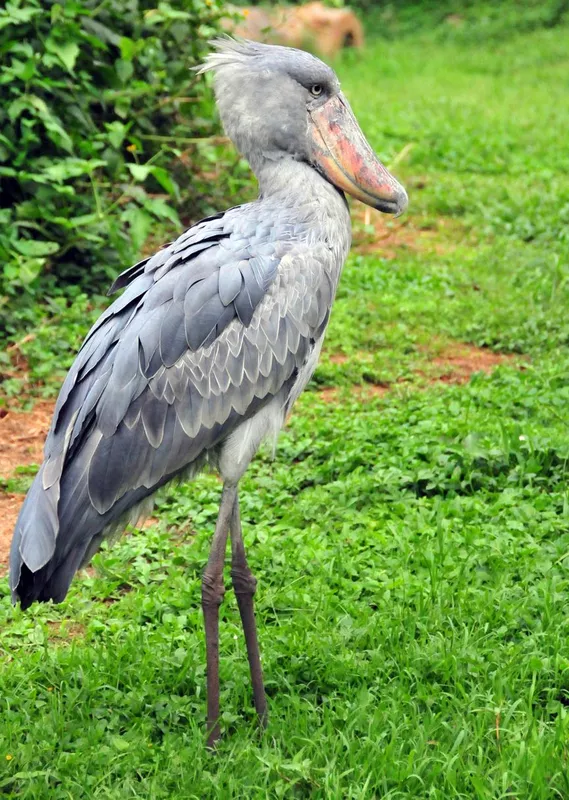
mtcurado / Getty Images
If you ever run into a shoebill, you’ll likely be amazed at just how big it is. The bird is up to 4 1/2 feet tall with a wingspan of 7 1/2 to 8 1/2 feet.
Much of its height is made up of its long skinny legs, which allow them to stand high in swamps and aquatic vegetation while searching for prey.
It’s not a heavy bird, only weighing between 9 to 15 1/2 pounds.
A Decent Lifepsan

Jonathan Benaiah / Getty Images
Shoebills live to be about 36 years old in the wild. They live to about the same age in captivity.
They are kept in zoos around the world, but rarely breed there. So far, they have bred successfully only twice in captivity — at Pairi Daiza in Belgium and at Zoo Tampa.
RELATED: Best Zoos in the World
A Loud Mating Call
When it’s time to mate, shoebills go from quiet to scarily loud. They engage in bill clattering, which makes them produce a series of popping noises that sound much like a machine gun.
When potential mates hear this mating call, they follow the sound to their willing partner.
Shoebills Live Most of Their Lives Alone
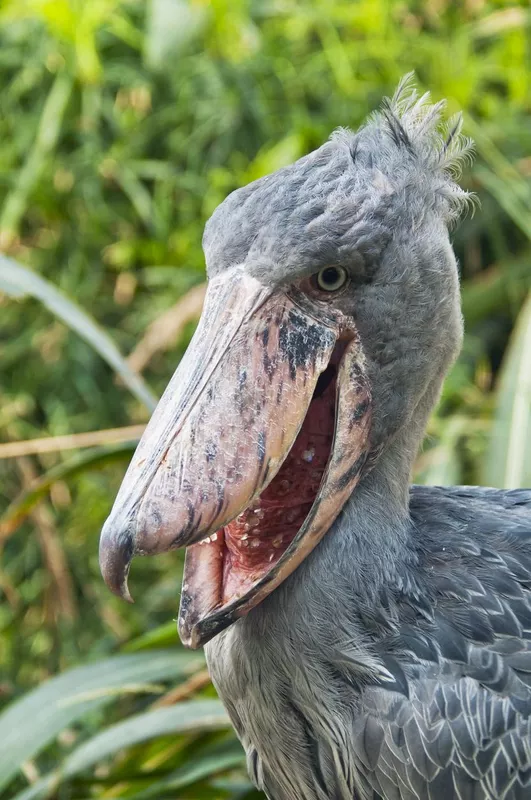
Nazzu / Getty Images
Shoebill storks are solitary creatures. They mate only a few times a year but otherwise live alone. Even if a male and female are paired up, they do not eat or hunt together.
Once mating season is over, they separate. Though they are not migratory birds, they will not encounter each other again.
Childhood Can Be Grim

Kesu01 / Getty Images
Shoebills — and other birds like egrets, herons, pelicans, and boobies — practice something called siblicide.
The first shoebill to hatch is the strongest. It develops quickly, as it has no food to share with siblings. The second chick, however, is out of luck. The parents don’t distribute food equally to both siblings, so it has no choice but to compete with its older, stronger family member.
The elder chick often bullies the smaller one to the point it dies from starvation or injury.
The Delectable Shoebill Diet
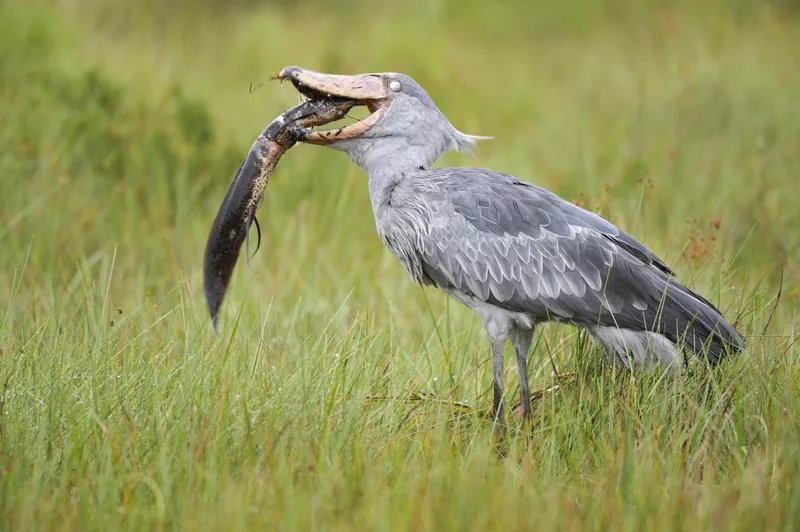
Michel Viard / Getty Images
The shoebill’s main dietary staple is fish — lungfish, bichirs, tilapia and catfish. However, the bird also hunts other small animals, such as frogs, lizards, watersnakes, snails, rodents, and baby crocodiles.
Shoebill storks mostly hunt during the day, but they also will look for food at night under the bright moonlight.
Patience Is a Shoebill Virtue
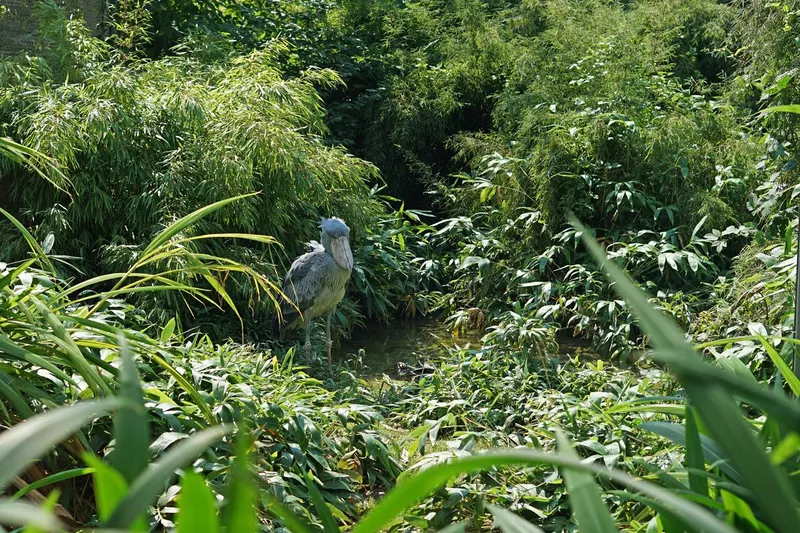
Milan Sommer / Getty Images
When it comes to the hunt, shoebills can stand at the waters edge waiting for a catch for hours on end.
They stay quiet and almost motionless until prey gets close, then they lunge at the hapless creature with their sharp bill, snapping it up and devouring it whole.
How the Shoebill Keeps Its Cool
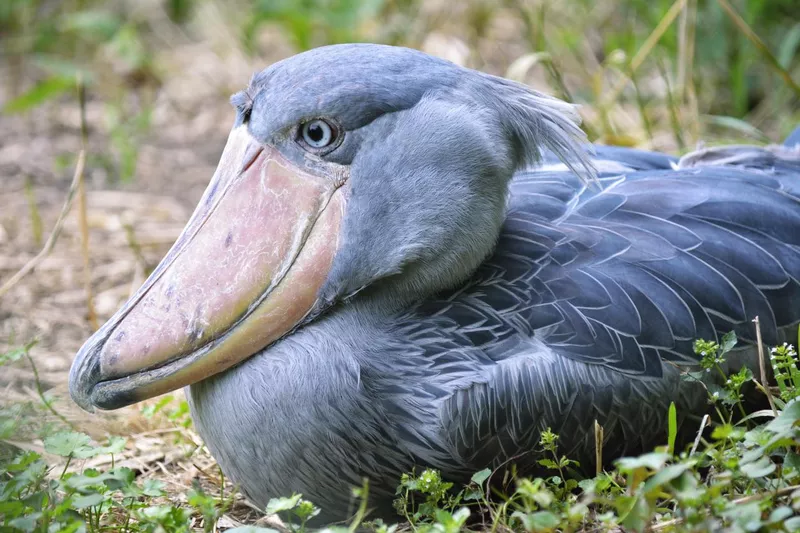
katana0007 / Getty Images
While hunting, shoebills practice urohidrosis — defecating on their legs — to keep their body temperature low. The waste covers them and cools their skin as it dries and evaporates.
It also serves as a sort of sunscreen. The evaporating waste leaves a white, powdery substance behind that reflects sunlight.
Slow and Steady Wins the Prey
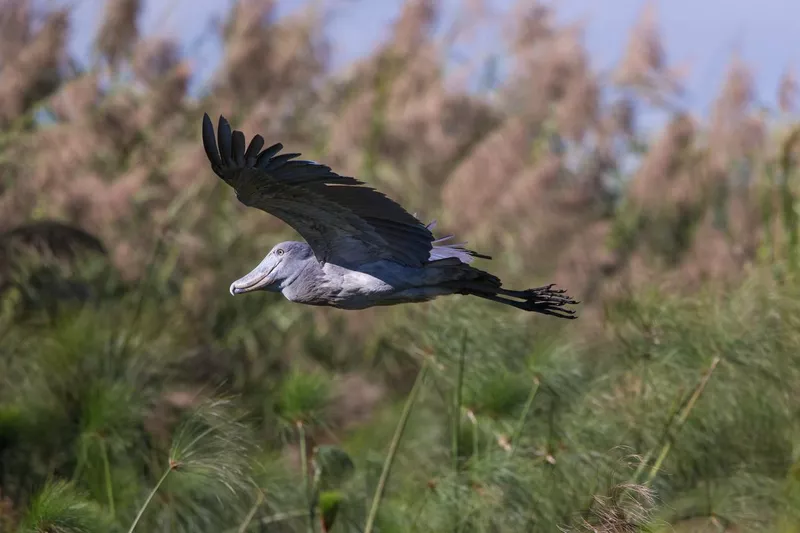
A Shoebill in flight jez_bennett / Getty Images/iStockphoto
On land, shoebills are soft-footed and slow. They move slowly and stay silent and hidden while waiting for prey.
A shoebill flight is different story. The bird flies about 30 miles per hour and, as it does, retracts its neck against its body.
A Beak to Be Reckoned With
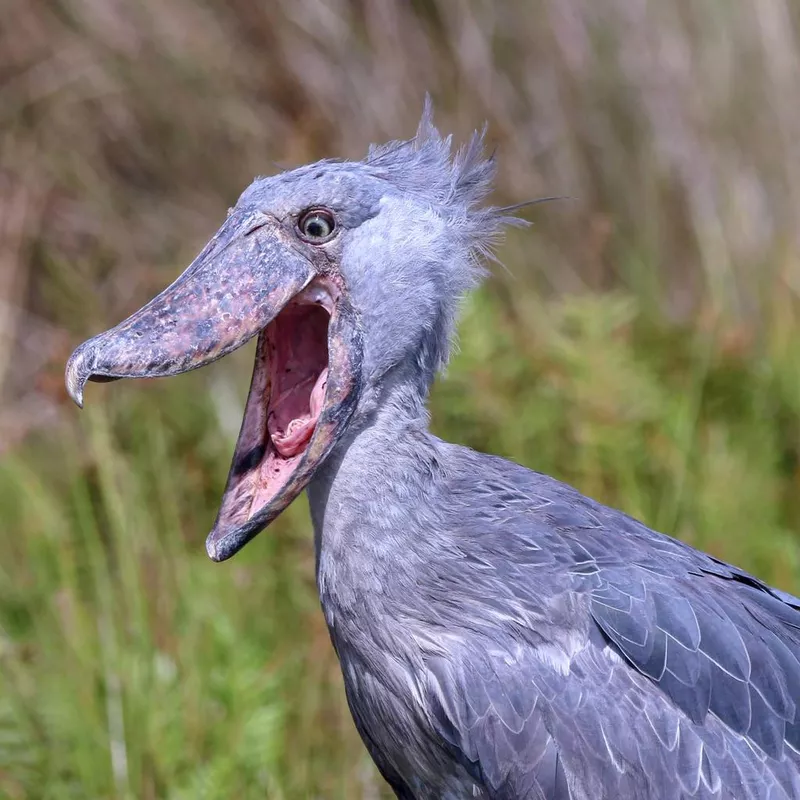
Nick Shillan / Getty Images
The shoebill’s beak is, at minimum, seven inches long. Of all living birds, it has the third largest. The beak has sharp edges and a hooked tip, which allows it to easily and nearly instantly kill its prey.
To give you some perspective, it’s got a bite hard enough to sever the head of a six-foot lungfish.
Shoebills and Humans
Shoebill storks are wary of humans, but nevertheless friendly toward them. Bird researchers have been able to come within few feet of a shoebill stork in its nest and all it will do is glare at them.
In captivity, shoebills get used to human visitors rather quickly. If you bow, they’ll bow back. They also shake their heads. In water, this helps them to shake off weeds. Outside of it, it’s just a habit and a fun way to engage with humans.
Shoebill Storks Are Disappearing
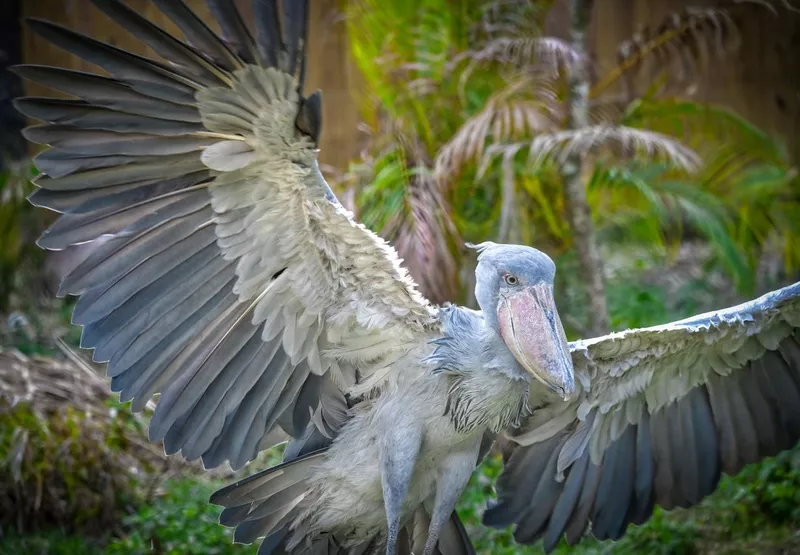
Chase D’animulls / Getty Images
The shoebill stork population is difficult to evaluate, but the species has been classified as vulnerable. There are estimated to be between 5,000 and 8,000 shoebills left.
Habitat destruction, hunting, nesting disturbance, climate change and the illegal bird trade have all contributed to their dwindling numbers.